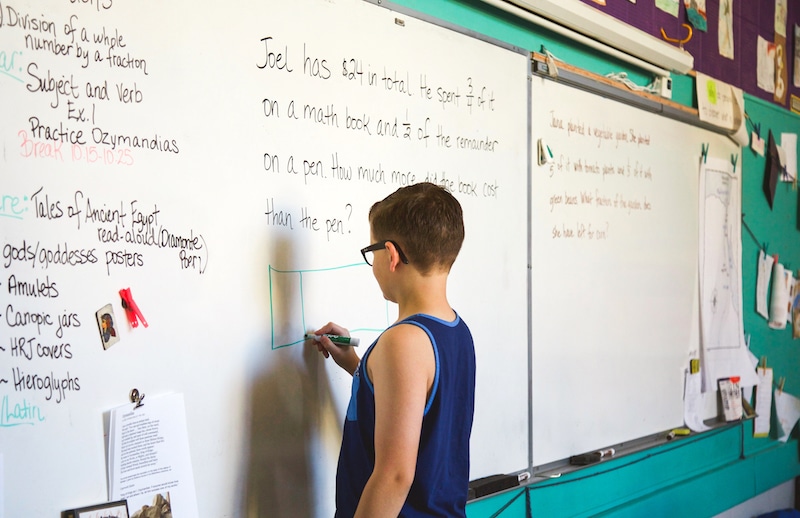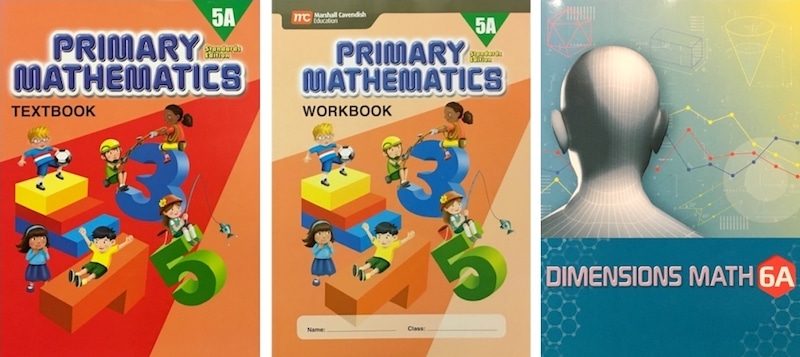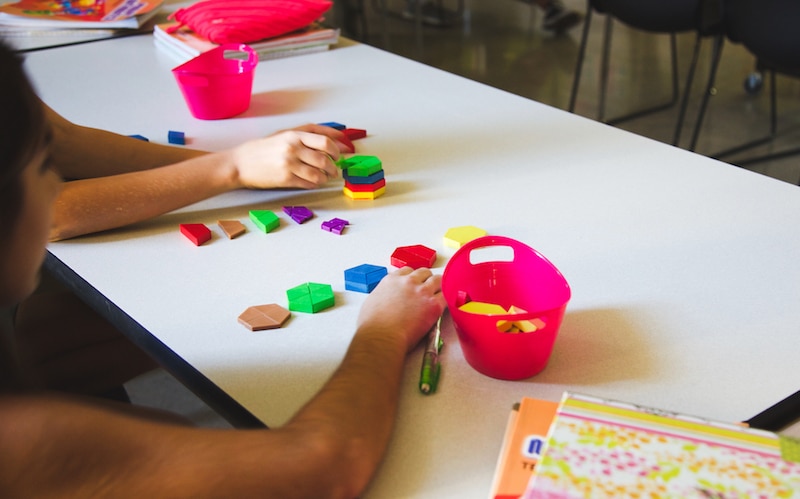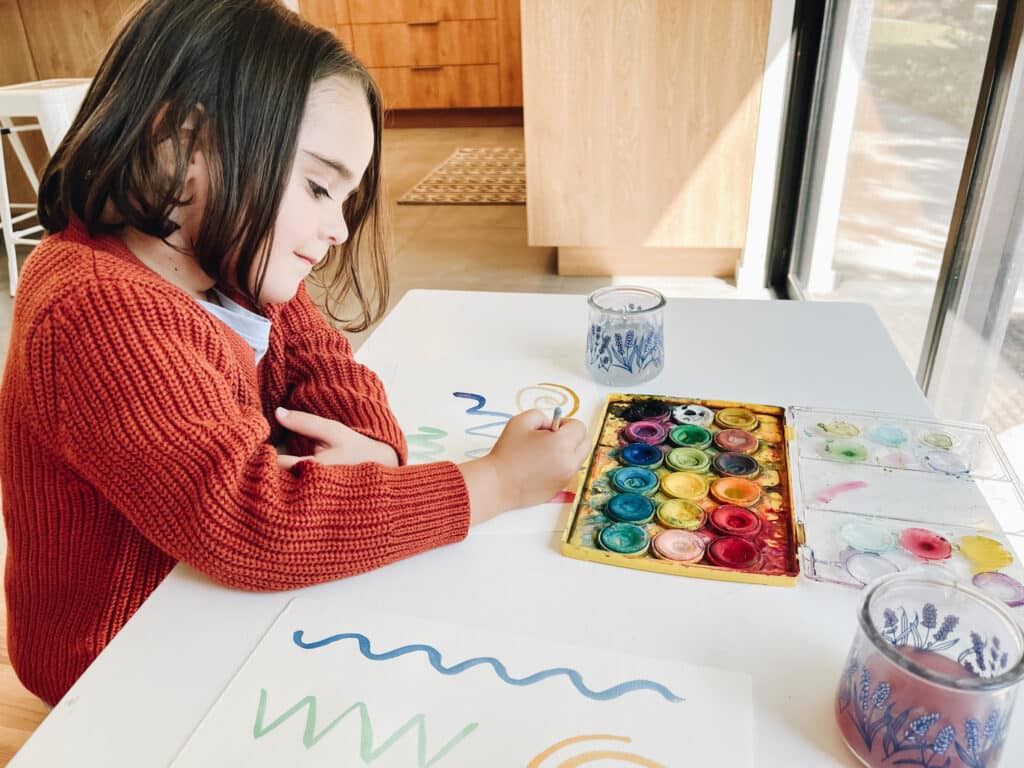
{photo by Cheryl McCabe}
Today we bring your our final installment in the Singapore Math Tips series, all in preparation for the Singapore Math training happening this Friday, December 8th! This post was originally co-written by Lisa Ann Dillon, our Singapore Math Lead, and Jamie Foster, a former math teacher here at SLOCA. Our current teachers still stand behind the advice given here, so once again we’d like to share these tips and tidbits for building success wth Singapore Math in levels 5 and 6.
We encourage students to read this along with their parents – it’s written to our young math scholars:

At levels 5 and 6 one of the most important tenets is that you show your work – all of it. By doing so, you will develop better habits, be able to catch your own mistakes, and further cement the steps and procedures you are learning. In addition, it's the only way teachers/helpers can determine how best to help you. In the future, it's the way colleagues and supervisors will evaluate your work so best to start those good habits now.
|
{Photo by Brook Ward on flickr / CC BY-NC 2.0} |
How do you get to Carnegie Hall? Practice, practice, practice! This only holds true if you are practicing correctly. It may seem at this level that you should be working more independently, and in some ways this is the case. But, home educators should be certain that you understand the concept and the steps needed to solve problems correctly – before you go off on your own to complete your work. Also remember to employ the practice of estimation to check whether your answers are reasonable. When this doesn’t fit the bill, remember to re-work any problem you are doubtful about. A good mathematician always checks the work!
Develop self-honesty. Math is among the easiest of subjects in which to do this. There are right and wrong answers. Look honestly at how you are doing. Check your work then have your home educator check it. For every problem where you find a mistake, make the necessary corrections. Ask questions and clear up any misunderstandings about the appropriate procedure for solving correctly. Parents, it’s helpful for you to consider this step as well. Be realistic about the skills your child has and give help as needed.
 Understand that there are many ways to solve any given problem. This can be liberating. As long as your logic is solid, you follow the rules, and are accurate with your computations – you can get there. So dive in and give problems a try even when the solution doesn’t readily present itself. Be tenacious! Keep in mind that riddles, puzzles and games such as chess help to develop a logical brain. So approaching problems logically can be taught and practiced.
Understand that there are many ways to solve any given problem. This can be liberating. As long as your logic is solid, you follow the rules, and are accurate with your computations – you can get there. So dive in and give problems a try even when the solution doesn’t readily present itself. Be tenacious! Keep in mind that riddles, puzzles and games such as chess help to develop a logical brain. So approaching problems logically can be taught and practiced.
A hallmark of the Singapore math approach is to work problems at the concrete level before moving to the abstract. Make sure the concepts are understood concretely. When learning averages, for instance, use 3 to 5 plates with 2 to 10 items on each plate and show how to take an average by physically moving the objects around. Students, if your home educator listens carefully to what you say in the process they can learn a lot about how much you understand and whether you are ready to move on to the paper and pencil part of an assignment. Home Educators – do not skip lessons! There is not a wasted step in the Singapore approach and each lesson is essential.

{photo by Cheryl McCabe}
Here is where the rubber meets the road. At your age and level of maturity, you should be making use of all the “real life” opportunities to do math. Think about helping in the kitchen with measuring and converting. Do some of the grocery shopping with your family and use cash to pay. Try to figure out the change before the cash register does. Help read maps when you travel. Plot out the mileage. Consider figuring out tips and percents of a sale when dining out and shopping to work on percentages. You get the picture.

{baking photo by Andrea Goh on flickr / CC BY 2.0} and {map photo by Chris Lawton on Unsplash}
Scholars, if you go back and read through the posts for the other levels (click for: Kindergarten, Levels 1 and 2, Levels 3 and 4) – you will find a lot of tips for getting your math facts memorized solidly. This cannot be overemphasized and is vital at every level. Math facts should become as easy as breathing to you! We want the facts so ingrained that you can answer quickly and automatically for any single digit addition, subtraction, and multiplication or division problem. (The subtraction facts and division facts will have multiple digits of course!)
Finally, be the kind of learner who takes responsibility for your learning! Remember that there are many resources available. One excellent choice is Khan Academy online. And of course have a willingness to communicate with your classroom teacher if you are struggling in any way or if you are looking for extra challenges. We are here to support you and to help you to succeed. So get going today. Take our tips and tidbits and make the habits your own so that YOU can be a mathematician extraordinaire.
Thank you, teachers! Students, you can participate on our blog too – what math games, tips, or activities have you found that really help you be the best mathematician you can be? Leave a comment below and share your thoughts!













1 thought on “Singapore Math Tips 2017: Levels 5 and 6”
Tips for Singapore Math are really amazing for level 5 and 6 students. Thank you for your help.